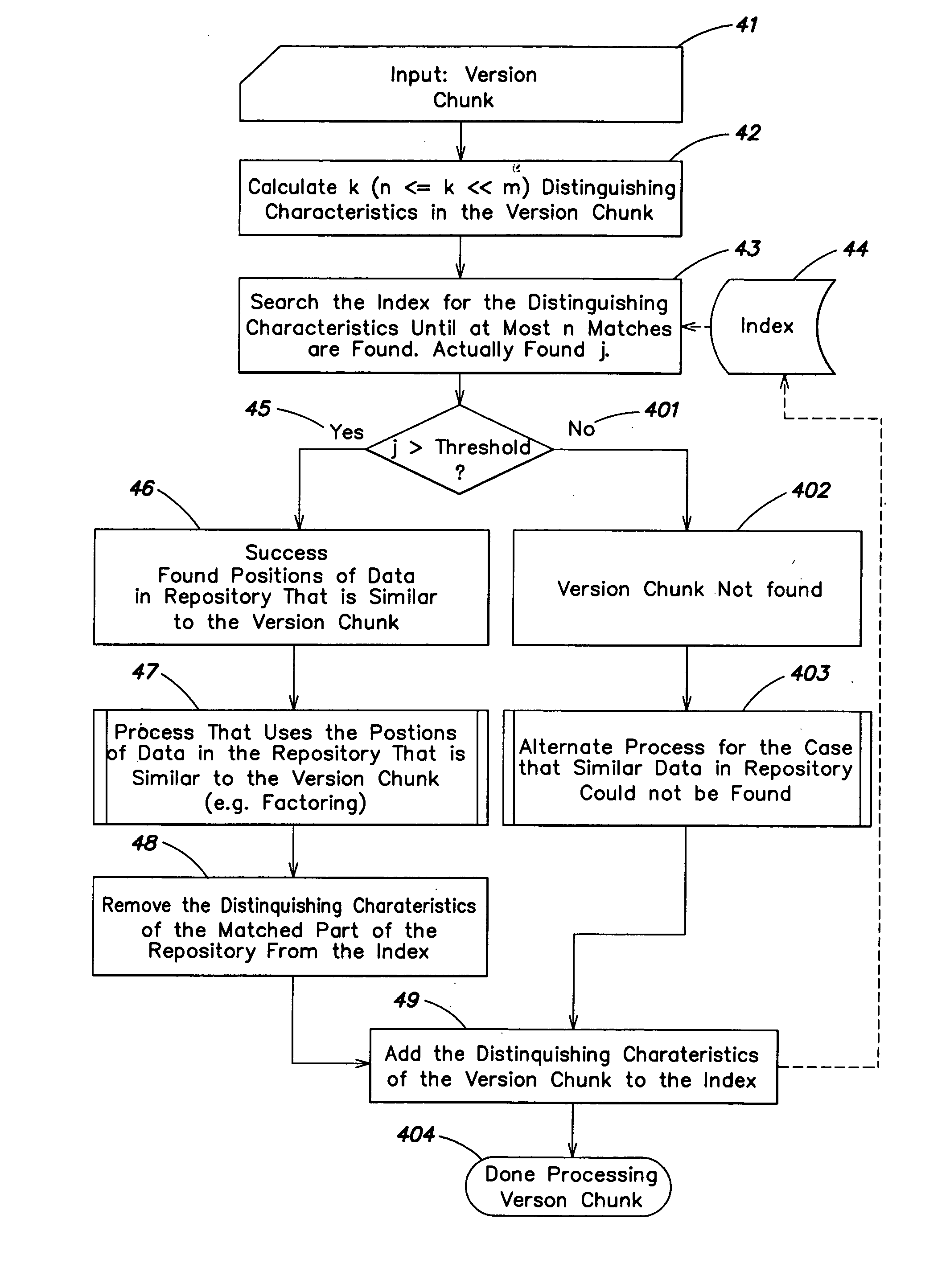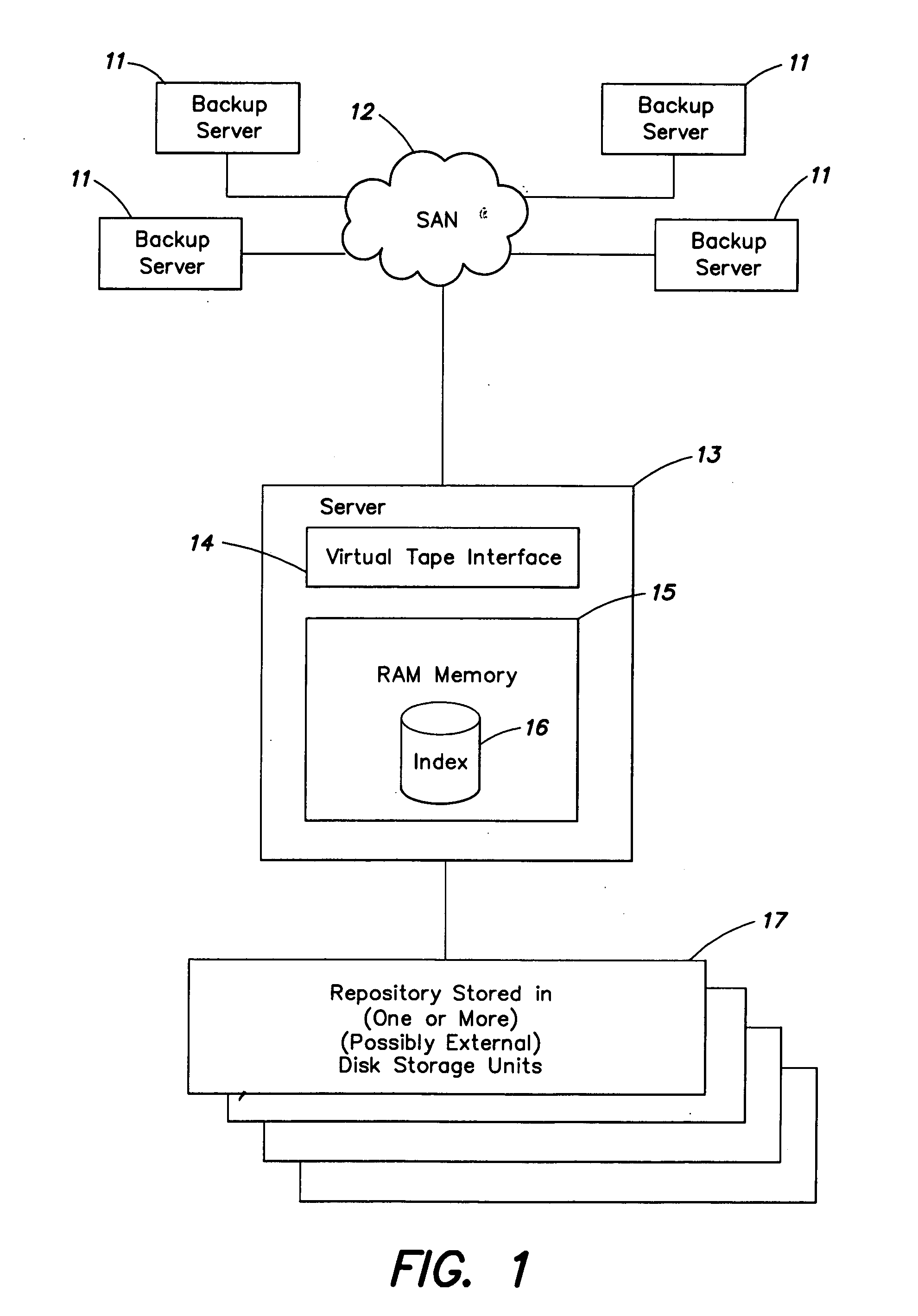Systems and methods for efficient data searching, storage and reduction
a data search and data technology, applied in the field of systems and methods for searching and storage of data, can solve the problems of not being scalable beyond some restrictive limit, unable to find localized data changes, and unable to announce only exact matches
- Summary
- Abstract
- Description
- Claims
- Application Information
AI Technical Summary
Benefits of technology
Problems solved by technology
Method used
Image
Examples
Embodiment Construction
[0144] As used in the following embodiments, a repository is a collection of digital data stored in memory and / or storage of a computer reference; there is no limit on its size and the repository can be of the order of one or more PB. In particular applications, the data is stored as binary uninterpretted data. The input data can be of the same type or different from the repository data; the input data is also called the version. In particular applications, the version and repository are broken into chunks. The chunk size m is a parameter, e.g. 32 MB. The term seed refers to a consecutive sequence of data elements, such as bytes. The seed size s is also a parameter, e.g. 512 bytes, or (in other non-limiting examples) 4 KB or even 8 KB. Generally, the seed size s is much smaller than the chunk size m.
[0145] In accordance with certain embodiments of the invention a hash function is used. A hash function maps elements of some large space into elements of some smaller space by assignin...
PUM
 Login to View More
Login to View More Abstract
Description
Claims
Application Information
 Login to View More
Login to View More - R&D
- Intellectual Property
- Life Sciences
- Materials
- Tech Scout
- Unparalleled Data Quality
- Higher Quality Content
- 60% Fewer Hallucinations
Browse by: Latest US Patents, China's latest patents, Technical Efficacy Thesaurus, Application Domain, Technology Topic, Popular Technical Reports.
© 2025 PatSnap. All rights reserved.Legal|Privacy policy|Modern Slavery Act Transparency Statement|Sitemap|About US| Contact US: help@patsnap.com



